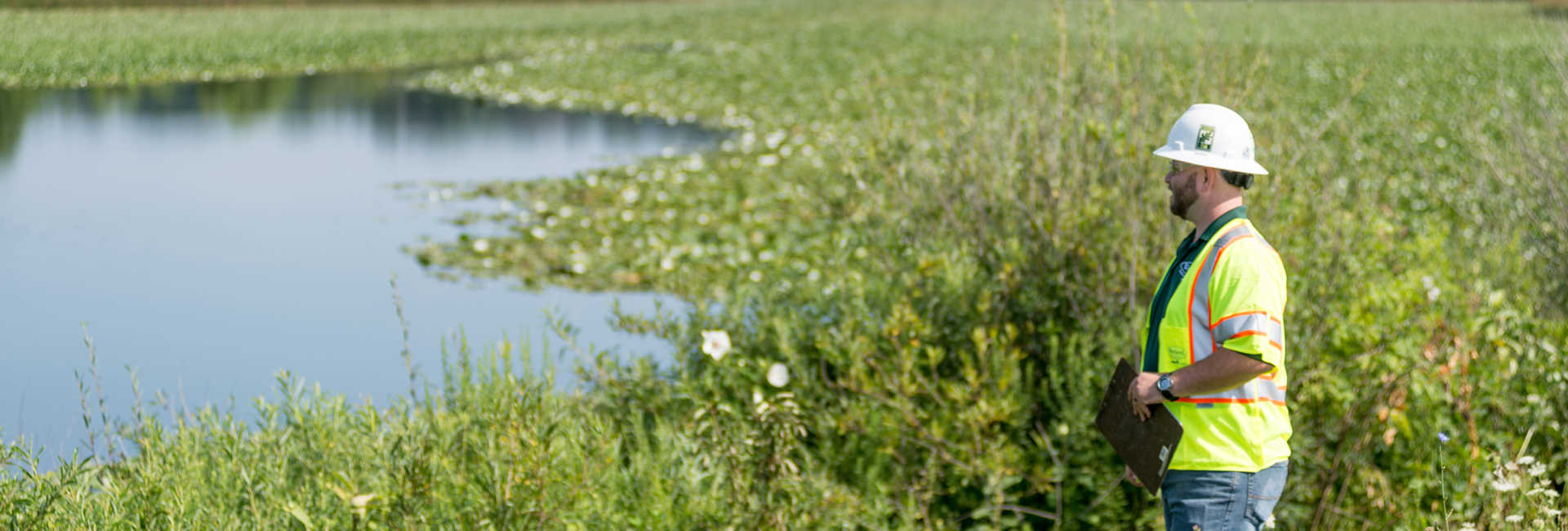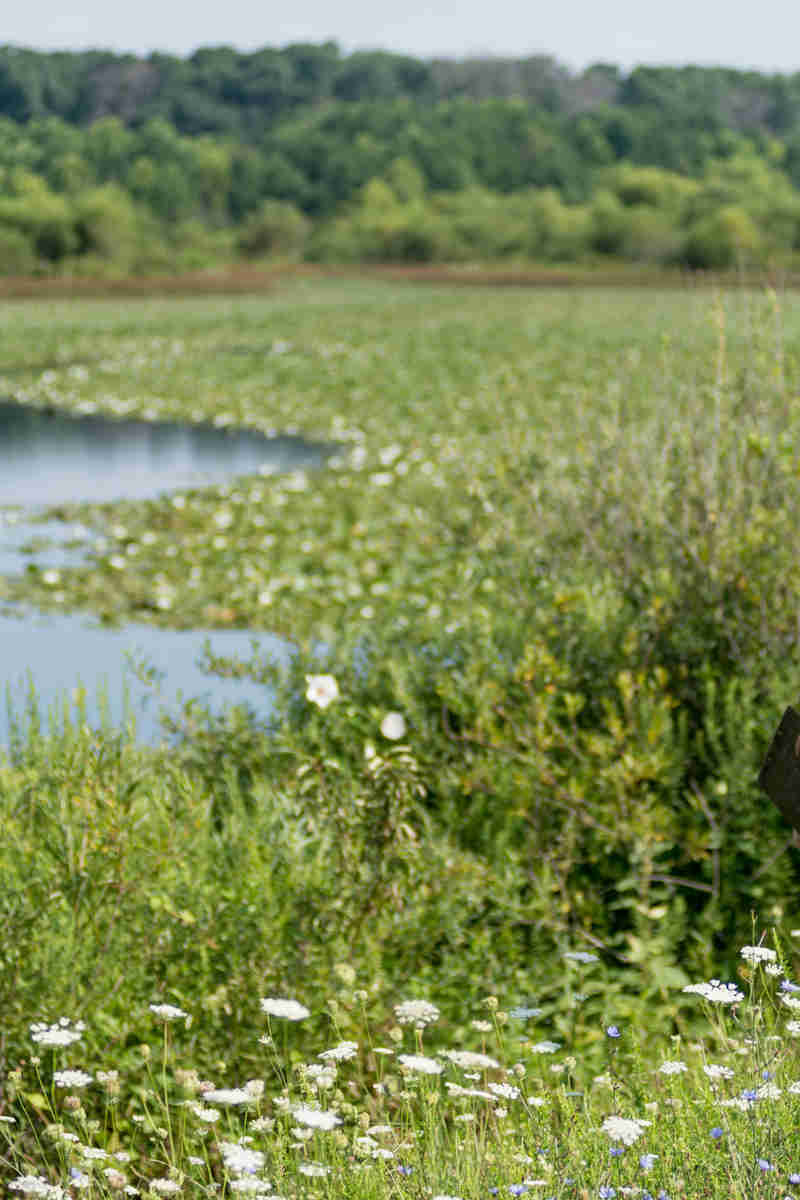Article by: Jessika Mitchell, Project Coordinator (CA)
Background & Early Cases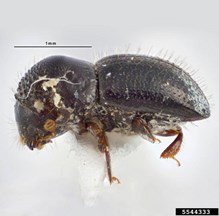
The Invasive Shot Hole Borers/Fusarium Dieback (ISHB/FD) complex has become one of the most widespread and concerning pest/disease complexes affecting southern California trees. It was first found in Whittier, CA in 2003 but was mistakenly identified as the Tea Shot Hole Borer (TSHB) so regulatory action was not taken. In 2009 what was thought to be TSHB/FD was found causing serious damage to avocados in Israel and in 2012 Dr. Akif Eskalen from the University of California at Riverside (UCR) found a TSHB/FD infested avocado tree in South Gate, CA. Entomologist Dr. Richard Stouthamer at UCR used DNA analysis techniques and found that although the beetles in Israel and southern California were physically identical to TSHB, they were actually a new species of shot hole borer. Because of the wide range of hosts it was found attacking, he called it the Polyphagous Shot Hole Borer (PSHB).
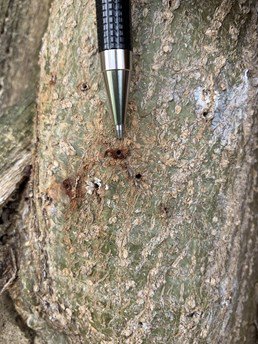
Since then, PSHB has spread throughout Orange, Los Angeles, Riverside, San Bernadino, San Diego, Santa Barbara, and Ventura counties. In 2014, another physically identical shot hole borer was found attacking avocados in Fallbrook, CA and determined to be a new species: the Kuroshio Shot Hole Borer (KSHB). In 2018 the two ambrosia beetles were officially recognized as new species and given the names, Polyphagous Shot Hole Borer (Euwallacea whitfordiodendrus) and Kuroshio Shot Hole Borer (Euwallacea kuroshio). Together, PSHB and KSHB are collectively referred to as Invasive Shot Hole Borers (ISHB) and are responsible for the death of thousands of trees in southern California.
While many pests affect a specific tree species or genus, ISHB beetles have been known to reproduce in over 60 different species including shrubs, broadleaf trees, and palms. The PSHB is the vector of Fusarium euwallacea and the KSHB vectors F. kurosium, two fungal pathogens that cause general tree decline, branch dieback and in some species, tree death. In this symbiotic relationship, female beetles introduce the pathogens as they bore into plant tissues and grow the fungi, which is their food source, on the gallery walls. When air temperatures are suitable and the population has increased to high levels within the tree, winged females that have mated within the tree will leave the galleries and fly to a new host. Males do not have wings and therefore remain in the same tree where they reproduce with their mothers, sisters, and offspring.
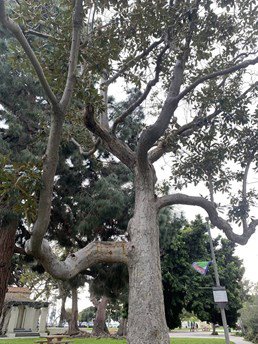
ISHB Management Strategies
Research has found that the most successful means of coping with ISHB/FD is early detection and a rigorous monitoring program. Infested trees with high populations (more than 150 active galleries and branch dieback) are referred to as “amplifier” trees and should be removed immediately. If these trees are identified early and proper wood disposal methods are employed, land managers may be able to effectively manage beetle populations with targeted use of pesticides/fungicides. While there are some recommended treatments, they are only practical in certain urban environments and application may be limited based on site conditions (e.g., many products cannot be used near bodies of water).
It is critical that land managers become familiar with the signs and symptoms of ISHB and that they stay up to date with the most recent findings. The list of known suitable hosts is continuously evolving as new species are discovered through intensive monitoring programs throughout the region. Train team members to recognize ISHB and encourage them to keep an eye out for symptoms while performing work on site. Remaining aware and vigilant will help your team identify amplifier trees before the beetles are able to spread. Visual identification of ISHB can be challenging, as each host species responds differently and symptoms may even vary within the same species depending on the host’s condition. When performing inspections, look for round entry holes, about the size of a medium ballpoint pen. Holes may not be visible if the openings are obstructed by frass, gumming or other exudates that are typically associated with this pest. Always look for unusual staining on bark and/or dieback of shoots and branches.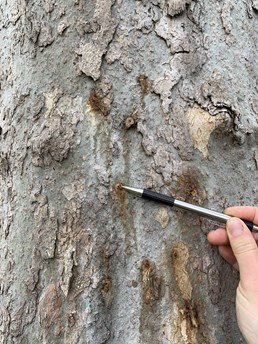
If any of these symptoms are observed, use a knife or woodworking gouge to scrape away the surface of the bark and expose the entry hole. Confirm that the size is correct and look for staining associated with a fungal pathogen(s) in plant tissue around gallery entrance. Always carry a spray bottle with ethyl alcohol or alcohol wipes to sterilize tools between cuts, this will prevent the potential of spreading the pathogen(s).
It is important to note that the presence of entry holes does not always mean that beetles are active or reproducing. With experience and proper training, individuals can learn to distinguish between active galleries and inactive galleries. If you are uncertain, use water-based paint to plug the hole and check for emergence in the coming days. If beetles are active they will push through the paint to expose the gallery opening. If you suspect that ISHB is present, submit samples to the County Agricultural Commissioner, the California Department of Food and Agriculture, or reach out to researchers and local arborists that can aid with identification. There are many look-alikes, so it is in your best interest to collect samples and confirm before taking further action.
Research indicates that ISHB/FD has the potential to spread into northern California and other parts of North and South America. It has already been identified in other parts of the world, including Israel and South Africa. Ultimately, exposure to this pest/disease complex is unavoidable. As land managers, researchers and environmental consultants, we are responsible for preventing further spread of this pest/disease complex.
For more information about ISHB/FD management strategies, visit the websites below or check out DRG’s presentation at the Annual Western Chapter ISA Conference in April 2019!
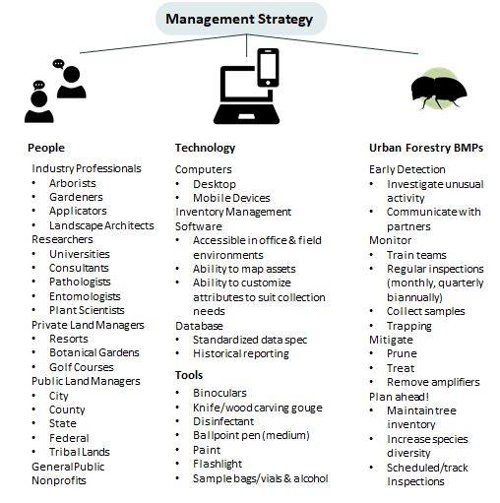
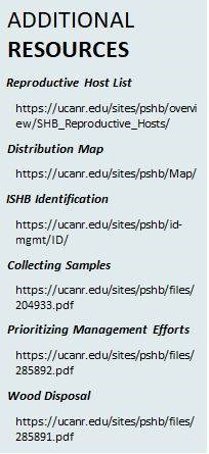
References:
- Hulcr, J., & Landers, J. (2019). So Many Shot Hole Borers: New Research Charts Four Nearly Identical Species. Retrieved from https://entomologytoday.org/2019/01/07/so-many-shot-hole-borers-new-research-charts-four-nearly-identical-species/ Umeda, C. Y. (2017).
- Environmental Effects on Polyphagous Shot Hole Borer (Doctoral dissertation, University of California Riverside) [Abstract]. Retrieved March 4, 2019, from https://escholarship.org/content/qt243646pn/qt243646pn.pdf
- The University of California. (n.d.). What are the Polyphagous and Kuroshio Shot Hole Borers? Retrieved March 4, 2019, from https://ucanr.edu/sites/pshb/
Photo Credit: Hanna Royals, Museum Collections: Coleoptera, USDA APHIS PPQ, Bugwood.org


